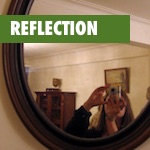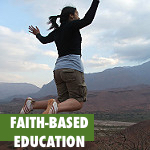Physical, social, and emotional health are the top priorities in our learning communities. Period. End of story.
Educators have been preparing for the opening of schools with this in mind. Thinking through endless what-if scenarios. Arranging and rearranging classrooms to observe best observe social distancing guidelines. Reading constantly updated and addended protocols. In addition, hand sanitizer and hope.
Hand sanitizer and hope.
Schools are leaning into structures and routines to help students feel welcome, safe, heard, and cared for.
But… Are we showing up for educators in the same way? Do you feel welcome, safe, heard, and cared for?
Let’s be honest for a moment. This is a marathon. The things we are asking mandating educators to do each single day is unreal. Skip the idea of “rock stars” and “super heroes”. This situation’s next level.
And that’s just the professional part of your lives. Are you getting the support you need to be your full human self at the end of the day?
Now, if advisories are good for students…
Could they work for adults, too? I wondered.
Fast forward to some in-service planning. I met with the principals of two local schools, one in Concord and one in Gilman — both in Vermont — and started re-designing in-service along the lines of what we know works about advisories. Both principals spoke about wanting to make sure they take care of their teachers well.
Adult socio-emotional learning (SEL) was number two on both their lists, right after students.
Beginning our advisory for educators… by coming full circle.
After some socially distant re-connecting and welcoming the day, we started with a Circle of Power and Reciprocity. The core components here are:
- a greeting
- a share
- an activity
- and some news and updates.
Slight modifications were necessary. Normally we would stand in a circle, close to each other, passing a talking piece from person to person. No-go for this year.
But luckily Zoom did its job.
The power of the circle is we all can see each other and connect as a community. Given that some folks were in their classrooms, and some at home, being “together” was a powerful opening.
The circle can also balance the power in the room. When sharing you can only talk when you have the talking piece. Similarly, folks can also pass if they choose to. It also let’s give folks some predictability. They know where they are in the list so they can prepare their response.
A quick rundown:
Today’s Tune:
What lies ahead, I have no way of knowing
But under my feet, baby, grass is growing
It’s time to move on, it’s time to get going
Music can represent a theme or create a certain vibe. In this case, it was just a few quiet moments for educators to sit with their thoughts and settle into the day.
Today’s Share:
In the chat: What are you most looking forward to? And what are you most concerned about?
The intent here was to allow folks to be heard (and vulnerable). They control the conversation and take it in the direction they need.
Today’s Activity:
Pecha Kucha.
For the purpose of getting to know one another, we’ll just create one slide each, filled with images and text that illustrate who we are.
With building community in mind this is a great activity for welcome new folks. For more activities check out 14 Socially Distant Advisory Activities
News and Updates: Just a place for some logistics and forecasting.
Did advisory for educators work?
Certainly, the start was a little shaky. It was new. Folks had a lot on their minds (understatement of the year).
Not to mention it was the first time many folks were physically back at school since March.
But each day we ran our advisory for educators, things got a little better. Folks embraced the process and began to appreciate the space. Similarly, when someone shared a vulnerable moment, so many folks shared a connection. Giving that universal signal for a connection.
Secondly, folks didn’t feel alone. Colleagueship was honored in new ways. The “we are in this together” mentality was evident and relationships strengthened. The power of a team took on a different meaning.
It’s a space to just be yourself. Show up how you want to. No brave face needed. Tears and laughs are equally welcome. Much like students, teachers like some element of choice and this is just one opportunity.
Consequently there is a price. This time can be dedicated to something else. However, what’s the price of not doing this?
Ultimately, people we in a better place to do the hard work. Just like we hope for our students. Perhaps following a little bit Maslow’s work.
Keep it going now
A few days in August was just the beginning. Bringing back the marathon reference: educators need support and nurturing all along the way. So what can we do now to keep educators healthy?
The way we use use our time is a critical piece of the puzzle. Have you ever left a faculty meeting thinking “That should have been a email!”
Let’s not do that. We should maximize our time together and focus on the most critical things.
I don’t know about you but the timestamp on email says it all. 3:24 am is weirdly not an uncommon sight. How might we expand some of our screentime guidelines to educators? What boundaries can we share to keep a healthy pace?
So, let’s check ourselves! If we say we value the health of our educators (and students) do our actions align? If so, Great! Keep doing that. If not, you can make a change.
So what are folks doing? Moreover, let’s share and spread the work.
















































 For some students, being ready to learn when they arrive at school is a big ask, and more than a few carry trauma or mental health burdens through their day. And that’s why more and more, schools in Vermont are adding therapy dogs to their staffing rosters.
For some students, being ready to learn when they arrive at school is a big ask, and more than a few carry trauma or mental health burdens through their day. And that’s why more and more, schools in Vermont are adding therapy dogs to their staffing rosters.
 The growing trend of increasing student voice and choice in schools is opening authentic opportunities for dialogues between students and adults. Students, when given the opportunity to present to educators and administrators, almost always deliver on a level far beyond what many think middle schoolers are capable of.
The growing trend of increasing student voice and choice in schools is opening authentic opportunities for dialogues between students and adults. Students, when given the opportunity to present to educators and administrators, almost always deliver on a level far beyond what many think middle schoolers are capable of.

 As schools prepare to welcome students through their doors, many educators are researching how to talk with their students about the attacks in Charlottesville or Barcelona. Or how to respond to student concerns about diversity, tolerance and equity. Or, ulp, how to address this recent article by Wired, revealing that the state with the highest percentage of online trolls is… Vermont.
As schools prepare to welcome students through their doors, many educators are researching how to talk with their students about the attacks in Charlottesville or Barcelona. Or how to respond to student concerns about diversity, tolerance and equity. Or, ulp, how to address this recent article by Wired, revealing that the state with the highest percentage of online trolls is… Vermont. “Do you know where you are?”
“Do you know where you are?” The popularity of Project-Based Learning (PBL) has grown significantly with teachers and students, but what about parents? When students walk out of school, do they communicate their excitement about PBL to their families?
The popularity of Project-Based Learning (PBL) has grown significantly with teachers and students, but what about parents? When students walk out of school, do they communicate their excitement about PBL to their families? In a time when combining 21st century skills with personalized learning is in the thoughts of educators, students, and parents, I see the choice of a faith-based education as a very specific personal pathway.
In a time when combining 21st century skills with personalized learning is in the thoughts of educators, students, and parents, I see the choice of a faith-based education as a very specific personal pathway.  Using Google Forms and Google Sheets together can streamline your process and make all your tasks feel just a little more manageable.
Using Google Forms and Google Sheets together can streamline your process and make all your tasks feel just a little more manageable. I am fascinated with master schedules! This is certainly a massive understatement. I love the challenge of putting all the pieces together, showing how everything is connected. My mind is wired to think through a systems lens. I am always asking myself, if I change this thing over here what happens over there?
I am fascinated with master schedules! This is certainly a massive understatement. I love the challenge of putting all the pieces together, showing how everything is connected. My mind is wired to think through a systems lens. I am always asking myself, if I change this thing over here what happens over there? Have you every showed up to in-service wondering what the new initiatives for the year will be? Or wondered how to continue to meet the demands of the district and school while balancing the the needs of 21st century young adolescents?
Have you every showed up to in-service wondering what the new initiatives for the year will be? Or wondered how to continue to meet the demands of the district and school while balancing the the needs of 21st century young adolescents?




 Arts and citizenship is for 8th graders at Shelburne Community School. This past session, they had a digital media focus, looking at photography and Photoshop and digital manipulation.
Arts and citizenship is for 8th graders at Shelburne Community School. This past session, they had a digital media focus, looking at photography and Photoshop and digital manipulation.
 Let’s be honest, there’s not many days dedicated to the celebration of math or its concepts. This is why math folks get a little energized every March 14th. Picking up where last year’s
Let’s be honest, there’s not many days dedicated to the celebration of math or its concepts. This is why math folks get a little energized every March 14th. Picking up where last year’s A few years ago I had the opportunity to participate in the
A few years ago I had the opportunity to participate in the  Last week I had a chance to visit Shelburne Community School to see some underwater robotics. It’s one of several stories I walked away with that day that touched my heart and I feel compelled to share.
Last week I had a chance to visit Shelburne Community School to see some underwater robotics. It’s one of several stories I walked away with that day that touched my heart and I feel compelled to share.




